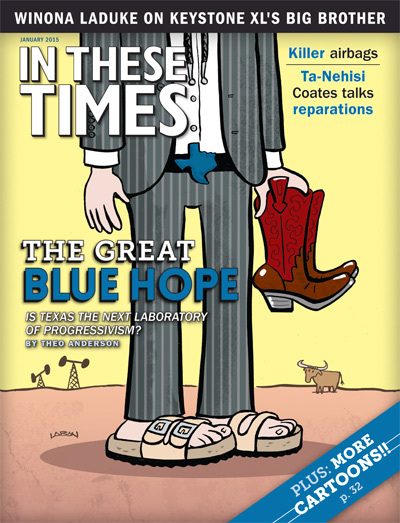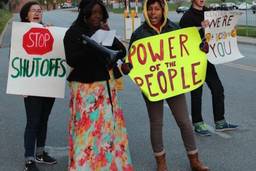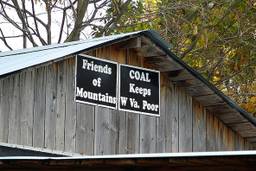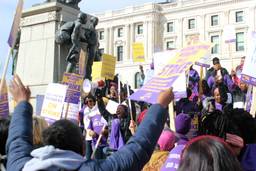A New Strategy To Make the Banks Pay
Youngstown, Ohio, may have found the cure to the national plague of abandoned properties.
Laura Gottesdiener
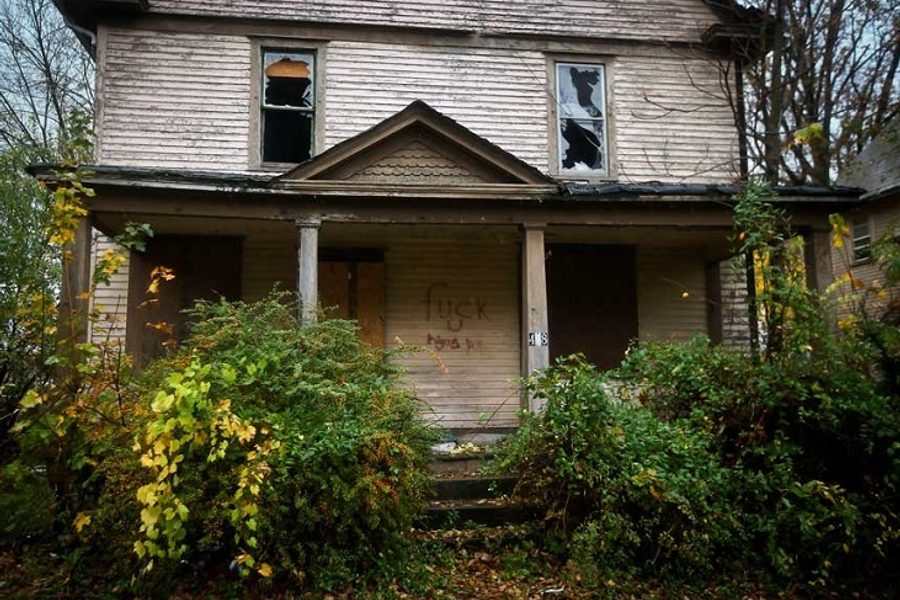
When Maureen O’Neil took the job of chief code official and neighborhood improvement coordinator for Youngstown, Ohio, she realized almost immediately she had a problem: The city was littered with blighted houses caught in a legal limbo known as “zombie foreclosure.”
It was 2011, three years into the worst housing crash since the Great Depression, and she and the rest of the code enforcement team were conducting hundreds of inspections a week of vacant homes across the city that had fallen into dangerous levels of disrepair. As the team started calling the homeowners into hearings, it quickly became clear that many had been pushed out by banks foreclosing on their homes and hadn’t lived in the houses for years. They didn’t realize that because the banks had never completed the foreclosure process, they were still responsible for the upkeep.
“It put us in a horrible position as human beings to say, ‘Well, actually, the property is still in your name, and in all likelihood the bank just dumped it in the middle of the process,’ ” says O’Neil. “It’s my belief that the bank would send a staff person or appraiser to drive by the property, and if that person saw that it was more of a liability and not something the bank was going to see much return on, rather than spend time and money on it, the bank wouldn’t complete the foreclosure process.”
Since 2008, foreclosures have caused a nationwide rash of blight, vacancies and municipal shortfalls as city governments are forced to invest millions to maintain properties abandoned by banks, loan servicers and lenders.
“Zombie properties” are especially costly for cities because they are almost always left unmaintained. According to a 2011 analysis by a coalition of community groups in California, from 2008 through 2012, each blighted foreclosed property cost the local government an estimated $19,229 in maintenance, inspections, evictions, trash removal — which, in total, added up to tens of billions of dollars across the state.
The foreclosure crisis took an especially high toll on old manufacturing cities like Youngstown, which has already seen decades of depopulation since the steel mills were closed down. According to some estimates, from 2010 to 2013 the city was spending about $100,000 a year simply to mow the lawn on vacant houses and commercial properties.
In 2010, the Mahoning Valley Organizing Collaborative (MVOC), a nonprofit focused on housing and other economic justice issues, estimated that 40 percent of the city was vacant in some form. Faced with this staggering figure, O’Neil and a collection of grassroots organizers and city officials decided that it was time to take more serious action. They turned the problem into an opportunity to implement an innovative program to make the banks begin paying for their damage to the community.
In early 2013, the city passed legislation requiring any entity initiating a foreclosure process — be it a bank, mortgage servicer, lender or individual — to post a $10,000 bond the moment the house becomes vacant (or immediately, if the house is already vacant). Unlike previous efforts by cities to impose fines on banks that weren’t keeping their houses up to code, which forced cities to go chasing after big financial institutions with little interest in paying, this method makes the banks pay first — and then recoup their money later if they fulfill their responsibilities.
“It puts the incentives on the banks to do their job and maintain the property,” explains Jacob Swenson-Lengyel of National People’s Action, a coalition of community organizing groups that works with its affiliates on housing justice issues. Failure to pay the bond is a first-degree misdemeanor criminal offense.
Youngstown was the third city nationwide to pass foreclosure bond legislation, but the first to successfully implement it. In 2012, Gary Davenport, then an organizer with the MVOC, began researching how cities across the country were solving the problem of holding banks accountable for vacant foreclosed homes. He found two other attempts at enacting a mandatory $10,000 foreclosure bond — one in Springfield, Mass., and another in Canton, Ohio. Springfield’s legislation dates back to 2001, but implementation became mired first in a lawsuit from major banks that lasted for more than a decade, then in local government bureaucracy. In Canton, likewise, a foreclosure bond was approved in August 2012, but a recalcitrant city government initially resisted implementation. Nevertheless, the two cities provided a legal template for Davenport, who helped organize a public campaign to convince the city to champion the legislation.
The legislation drew broad support from city officials and even from local banks who, after attending a summit meeting hosted by the city and community groups, came out in support of it. Proponents of the measure say that the main opposition came, instead, from large out-of-town lenders with no stake in Youngstown’s recovery.
Foreclosure bonds give the city a means to fund necessary repairs and demolitions, but they also act as a powerful inducement for banks to keep up their properties in the first place. Since payment of a bond is required only if a property becomes vacant, the measure could even provide an incentive for banks to help homeowners avoid foreclosure in the first place.
Since Youngstown began implementing the program, other parts of the Buckeye State have followed suit. Canton has rolled out implementation of its program, and Warren, Ohio, passed legislation in June of 2013. At least three other Ohio cities have bills in process. Meanwhile, Poughkeepsie recently became the first city in New York to pass legislation requiring foreclosure bonds, and activists in nearby cities such as Buffalo have launched campaigns around the issue. This summer, organizers from the group Nobody Leaves Mid-Hudson in upstate New York discussed the recipe for Youngstown’s success during a week-long training put on by the Ohio Organizing Collaborative, Davenport’s current organization.
Maureen O’Neil says that when Youngstown first passed the bill, she and other city officials were convinced they’d be sued by alarmed banks.
“We thought, ‘They’re not going to let this go on, because it’s going to sweep across the nation,’ ” she explains. “It was a real shock when they not only didn’t take us to court, but actually did pay these bonds. I’ve talked to a number of municipalities that are looking to pass similar legislation, and they are basing much of it on what happened in Youngstown.”
